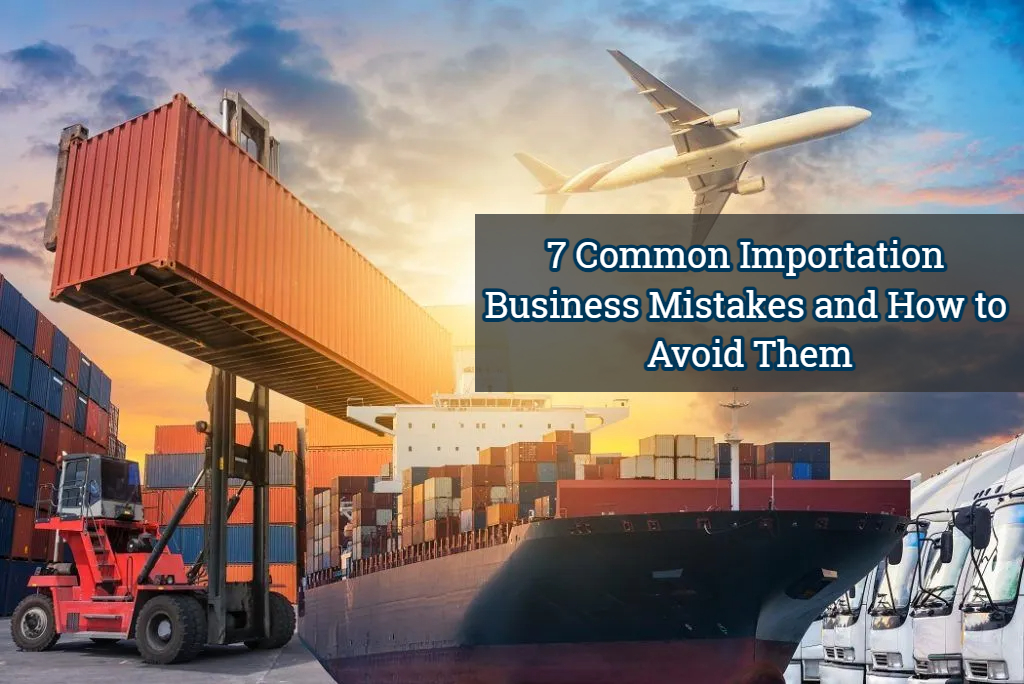The importation business, which involves the movement of goods across borders, is a lucrative opportunity, but it is not without its difficulties. Importation entrepreneurs frequently face various challenges that can significantly impact their path to success.
In this article, we’ll look at seven common mistakes in the importation industry and provide you with practical strategies for avoiding them. Whether you’re new to the importation world or a seasoned pro, the lessons learned from these blunders can save you money, time, and aggravation.
1. Insufficient Market Research
One of the primary blunders made by importers is conducting inadequate market research. It’s vital to comprehend the demand for your product within the target market before committing to any import-related decisions. Conducting thorough market research will help identify potential competitors, pricing trends, and consumer preferences. Armed with a well-informed market analysis, you’ll be well-equipped to make informed decisions and establish achievable goals.
2. Neglecting Supplier Due Diligence
Choosing the right supplier is pivotal to the triumph of your importation business. Failing to conduct due diligence on potential suppliers can open the door to many problems, including substandard product quality, shipping delays, and even falling victim to scams. It’s imperative to validate the credibility and reputation of your suppliers by seeking references, verifying certifications, and, if possible, paying visits to their facilities.
3. Disregarding Legal and Regulatory Requirements
Navigating the intricate world of importation regulations can be challenging, but non-compliance can have serious repercussions. Each country boasts its own unique set of importation rules, encompassing product standards, labelling prerequisites, and customs levies. Engaging legal experts or customs brokers who can guide you in adhering to all necessary legal and regulatory stipulations is highly advisable.
4. Underestimating Total Costs
The foundation of any successful importation business hinges on a meticulous analysis of costs, spanning from product prices to shipping fees. Importers often overlook supplementary expenses such as customs duties, taxes, freight insurance, and warehousing charges. Developing a comprehensive financial blueprint that incorporates all foreseeable costs is instrumental in sidestepping unexpected financial strain on your business.
5. Inadequate Inventory Management
Effective inventory management is a cornerstone of success in the importation realm. The primary aim of any importation business is to have stock readily available for potential customers consistently. Achieving this objective involves two key aspects:
a. Overstocking: Hoarding excessive products can tie up your capital, amplify storage expenses, and potentially leave you with obsolete items as technology evolves.
b. Understocking: Maintaining insufficient stock levels can leave your customers hanging, driving them to seek alternatives from your competitors. This can translate to lost sales and dissatisfied clientele.
Implementing optimal inventory management practices, often aided by specialized software, empowers you to track product levels, monitor sales trends, and make astute purchasing decisions.
6. Overlooking Product Features & Quality Control
Safeguarding consistent product quality is paramount for cultivating a devoted customer base. Neglecting product quality control leaves you susceptible to receiving faulty or subpar items, ultimately tarnishing your brand’s reputation.
Consider this scenario: A friend or colleague refers a customer to your business based on a product inquiry. Failing to address crucial product features such as colour and material and bypassing quality checks before shipping can expose you to the risk of distributing substandard or low-quality products.
Establishing a rigorous quality control regimen—ranging from direct inquiries with suppliers to physical inspections at manufacturing facilities—before procurement can help ensure that the products meet your stringent standards.
7. Disregarding Currency Fluctuations
In an era of economic volatility, currency exchange rates wield considerable influence over importation costs and profits. Ignoring currency fluctuations can potentially expose you to unexpected losses or elevated costs. Remaining well-informed about currency trends and considering hedging strategies, such as forward contracts or currency options, can mitigate the risks of exchange rate oscillations.
Importation businesses undeniably offer substantial prospects, but they also carry inherent risks. Sidestepping these common importation pitfalls is indispensable for realizing sustained success. Through thorough market research, the selection of reliable suppliers, adherence to regulations, and prudent financial management, you can chart a course for your importation business that leads to growth and prosperity.
Frequently Asked Questions
Q1. How much market research is sufficient before launching an importation business?
A comprehensive market research effort should encompass understanding market demand, competitor analysis, and consumer preferences. The deeper your insights, the more well-rounded your decisions can be.
Q2. Should I always prioritize the cheapest supplier to minimize costs?
While price is a key factor, balancing cost, quality, and reliability is essential when evaluating potential suppliers.
Q3. Is inventory management software a necessity for smaller importation businesses?
Absolutely. Inventory management software streamlines operations, ensuring efficient stock levels—a boon for businesses of all sizes.
Q4. How can I shield my business from the impact of currency fluctuations?
Exploring hedging strategies such as forward contracts or currency options can protect against unfavourable shifts in exchange rates.
